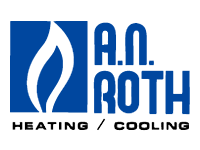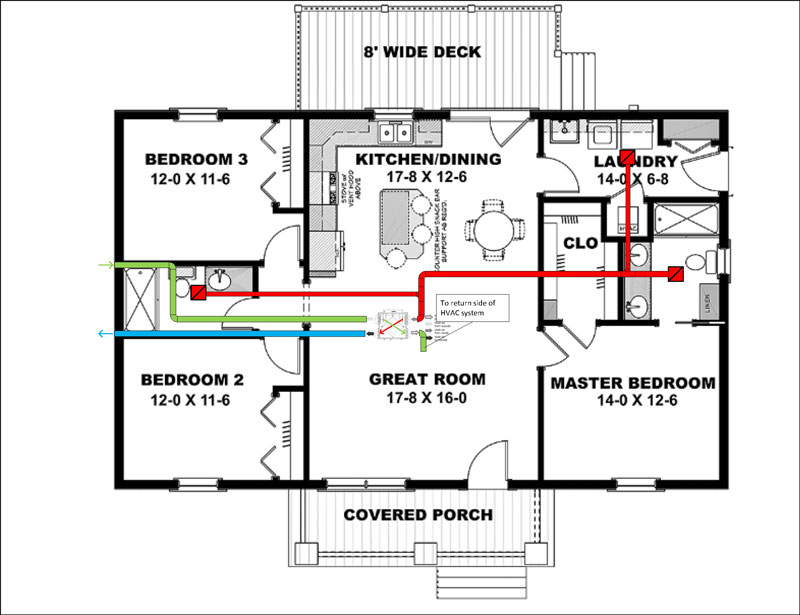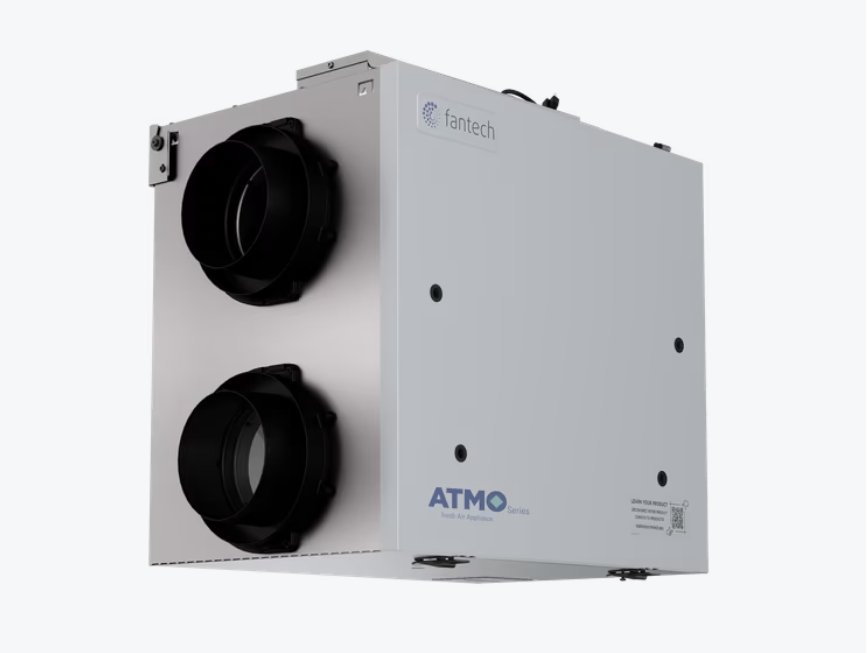The Benefits of
Make-Up Air Systems for Kitchens
When building a new home, it’s important to consider a fresh air system to maintain indoor air quality and comfort. Fresh outside air is required by code and there are different ways to meet this requirement. The most common is air intake with a mechanical damper that opens to introduce fresh air usually controlled by the thermostat. The second most common is a balanced ventilation system using an ERV or HRV. The least common is a ventilating whole house dehumidifier which can be used in conjunction with balanced ventilation system and is preferred in humid climates.
Fresh Air Intake
This is the most common because it is the cheapest and easiest way to comply with the building code. It can be as simply as an intake connected to the return air of the HVAC system that pulls in air whenever the blower runs or can incorporate a mechanical damper. With the mechanical damper something has to tell it when to open. This can be done based on time or can also use outdoor air temperature and humidity to limit when outside air is allowed to be introduced.
Heat Recovery Ventilators (HRVs)
An HRV is designed to exchange stale indoor air with fresh outdoor air while transferring heat between the two airstreams. In winter, it helps retain heat from the indoor air, warming and filtering the incoming fresh air. In summer, it can cool the incoming air by transferring coolness from the outgoing air. This minimizes the need for additional heating or cooling, making it a great system for climates where the temperature varies significantly throughout the year and is generally used in northern climates zones.
Energy Recovery Ventilators (ERVs)
An ERV, like an HRV, exchanges air between the indoors and outdoors, but it goes one step further by also transferring moisture along with heat. This means that during the winter months, an ERV can help retain moisture inside the home and it can help expel excess humidity from the incoming outdoor air during the summer months.
Ventilating Whole House Dehumidifier
This device uses the HVAC duct system and blower to dehumidify the air in a home. The larger models also have a port to connect outside air. These devices are needed in humid climate zones because as energy cost have gone up, we have built our homes tighter and more thermally efficient.
As homes became easier to heat and cool, our cooling system capacity requirements went down. The cooling system does two things; remove heat and remove humidity. When you make the unit smaller because the building is more thermally efficient, this doesn’t necessarily reduce the moisture removal need.
Unless we introduce outside air mechanically, most of our moisture is generated from people and activities like bathing and doing dishes. If your home doesn’t need as much cooling there is nothing dehumidifying your home.
Benefits of HRVs for Homeowners
Energy Efficiency During Colder Temperatures: HRVs are great for cold weather where you need to keep warm air inside. By recovering and recycling the heat from outgoing air, HRVs ensure that your heating system doesn’t have to work overtime.
Improved Air Quality: HRVs improve indoor air quality by continuously exchanging stale indoor air with fresh outdoor air, reducing the buildup of indoor pollutants, allergens, and CO2.
Low Maintenance: HRVs require minimal maintenance. Just clean the filters and check the heat exchange core annually.
Benefits of ERVs for Homeowners
Humidity Control: ERVs are particularly beneficial for homes located in humid climates. They help balance humidity levels, which is crucial for preventing mold, mildew, and condensation issues. Although these devises help remove moisture from incoming humid air, they do still increase humidity levels in homes. To ensure low humidity levels in a home, whole house dehumidifiers are needed.
Comfortable Indoor Environment: By controlling both heat and humidity, ERVs can provide a more comfortable indoor climate year-round—reducing that stuffy feeling in summer and the dry air in winter.
Energy Savings in Humid Climates: Like HRVs, ERVs help save on energy costs by reducing the need for air conditioning and heating. In summer, they reduce the load on your AC by expelling excess moisture, which can make the air feel cooler. In winter, they retain moisture, reducing the need for humidifiers.


